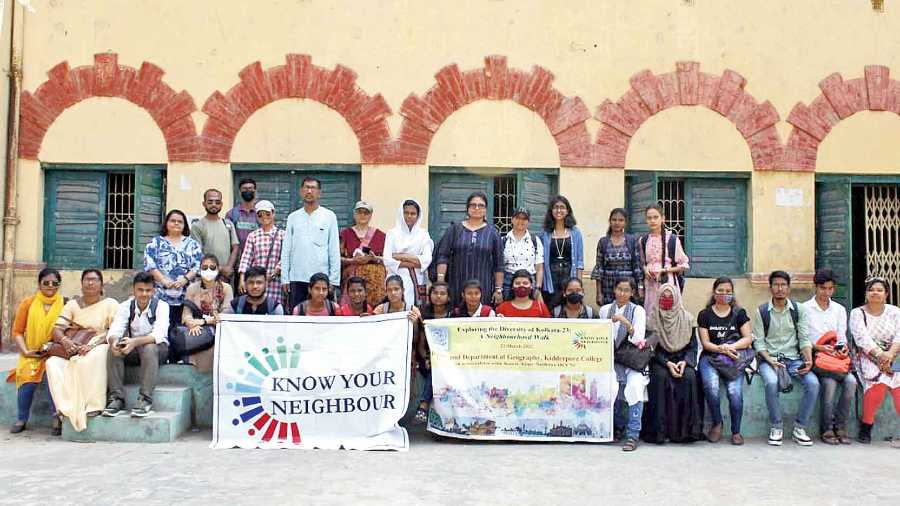Students from a college in Kidderpore in southwest Kolkata on Tuesday got a taste of the rich and diverse history and culture of the place that they were unaware of despite living there or going there every day.
The group of 22 students was part of a walk, Exploring the Diversity of Kolkata-23, organised by the conveners of a campaign, called Know Your Neighbour, and Kidderpore College.
The group walked through Dent Mission Road, Kavi Iqbal Road, Sudhir Bose Road, Karl Marx Sarani and several other roads. During the tour they came across a 19th century church, a 19th century mosque and a temple that came up in 2004 — exemplifying a happy cohabitation of religions, which has been India’s defining trait for centuries.
“There is a misconception that only people of a certain religion live in Kidderpore. That is not true. People from different religions coexist in Kidderpore,” said Sabir Ahamed, convenor of the campaign that organises walks for people to get to know neighbourhoods in the city.
Some of the students in the group live in Kidderpore but were unaware of its history and culture. Others are from different parts of the city and had a “limited” or “parochial” view of the neighbourhood.
They come to Kidderpore every day but have little idea of its geography and history beyond their college building.

The group in front of St Barnabas’ Church
The locality is often painted in monochrome and the idea behind the walk was to break the stereotype.
“Many people refuse to believe that Kidderpore is within the city and not some distant far-off place. People have a misconception that the place is known for notorious activities and violence. These stereotypes have to be discarded. Only with effort can that be done,” said Teesta Dey, assistant professor and head of the geography department, Kidderpore College.
During the walk, history was traced not only through religious institutions but through food, Ahamed said.

The group poses for a picture at St Barnabas’ High School in Kidderpore
The group visited K. Ali Bakery (German breads and Bakarkhani) on Mominpur Road. Bakarkhani, a kind of bread, is sold only for two hours in the morning. German bread is sold in the evening.
On the itinerary was also Shamim Bawarchi, a restaurant on Sudhir Bose Road that has been making and selling biryani for “at least three generations”.
“Contrary to popular belief, in Kidderpore there are people who speak different languages — Malayalam, Telugu, Odia, Bengali, Urdu, English (by Anglo-Indians) and Bhojpuri,” said Ahamed.
At one of the churches in the area, the service is conducted in Bengali, English and Malayalam, he said.
The walk stoked the students’ curiosity.
Second-year student Pushpanjali Shukla had spent two years at a school in Kidderpore but was never interested to find out more about the place.
“We have now learnt that people from different communities live in Kidderpore and they live together without biases. After today's walk, I am inspired to make a documentary on an old temple in the locality,” said the student of journalism and mass communication.
